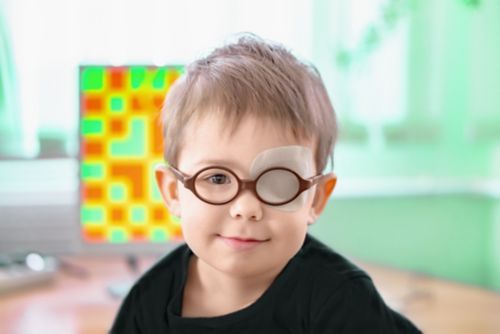With time and support, children and teens can thrive after eye removal surgery (enucleation).
In the beginning, how easily your child adjusts to life with 1 eye may depend on their age.
For example, a young child who grows up with 1 eye will not notice the difference. They will develop and learn along with other children their age.
Older children and teens who have an eye removed will need time to adjust. But after that adjustment period, your child will begin to adapt. It might not make a big difference in the quality of their life over a lifetime.
How living with 1 eye is different
Vision with 1 eye is different from vision with 2 eyes.
- Your child has a smaller field of vision than someone with 2 eyes. Field of vision is how much your child can see without turning their head to look.
- Your child will have different depth perception. Depth perception is the ability to judge how far away something is. For example, you use depth perception when you throw a ball or pour juice into a cup.
At first, these vision changes can make it hard to do everyday things. But your child will learn to notice things that will help them adapt to vision changes.
How to adjust to life with 1 eye
Your child might adjust naturally to having a smaller field of vision and different depth perception. But it can help to make simple changes to your living areas, such as adding colored tape to the edges of your ledges and stairs or placing common items in easy reach. Children can also learn new ways to do things on their own.
Tips for living with 1 eye
You can help your child learn to live with 1 eye using these tips:
- Use touch to see how far away something is. For example, show your child how to pour liquids by touching the edge of the bottle or pitcher to the edge of the cup.
- Let your child know to turn their head more than usual. For example, your child should learn to turn their head more than once both ways to look for traffic before crossing the street.
- Use colored tape to help your child see the edge of stairs. Pick a color that is easy to see. You can put the tape at the top, bottom, and edge of each step. Choose what works best for your child.
- Teach your child to use the handrail on stairs. They can also slide a foot to the edge of each step to learn where to step.
- Protect the eye that has good vision. Children should wear glasses all the time when they are awake and wear sunglasses outside. Your child should wear safety goggles for sports, crafts, and chores such as yard work.
Ways to help the other eye adjust
Here are some ideas to help your child’s working eye get used to seeing by itself. This happens with time. But using these ideas can help it happen faster.
For children and teens
- Walk along a straight line. You can use a sidewalk crack or tape on the floor.
- Play catch. Use a larger, softer ball than normal.
- Throw a ball or bean bag at a target.
- Reach for different things. This helps practice learning how far away something is.
- Practice turning your head to the side more to see things. For example, you can practice crossing a quiet street at first, turning your head completely both ways to see what is coming.
- Practice your balance. You can swing, roll around, jump, or dance. Do this in a safe place.
For parents of babies and toddlers
- Hold your child with their seeing eye away from your body. This makes your child turn their head to look at your face.
- Put toys that light up or make noise on the side where your child lost their eye. This gets them to turn their head to see them.
- Play with toys that roll across the room, such as cars or balls. Encourage your child to move their head to look at them.
- Put your child’s favorite toys on high shelves, down low off the floor, and in far parts of the room. This will help your child learn to explore the area around them.
- Encourage your child to reach for toys. Try not to hand toys to your child. Reaching for toys helps your child practice eye-hand coordination.
Ask for help if you have questions
If you have questions or concerns about how well your child is adjusting to life with 1 eye, reach out to their care team. Your child’s care team is there to answer questions and help.

